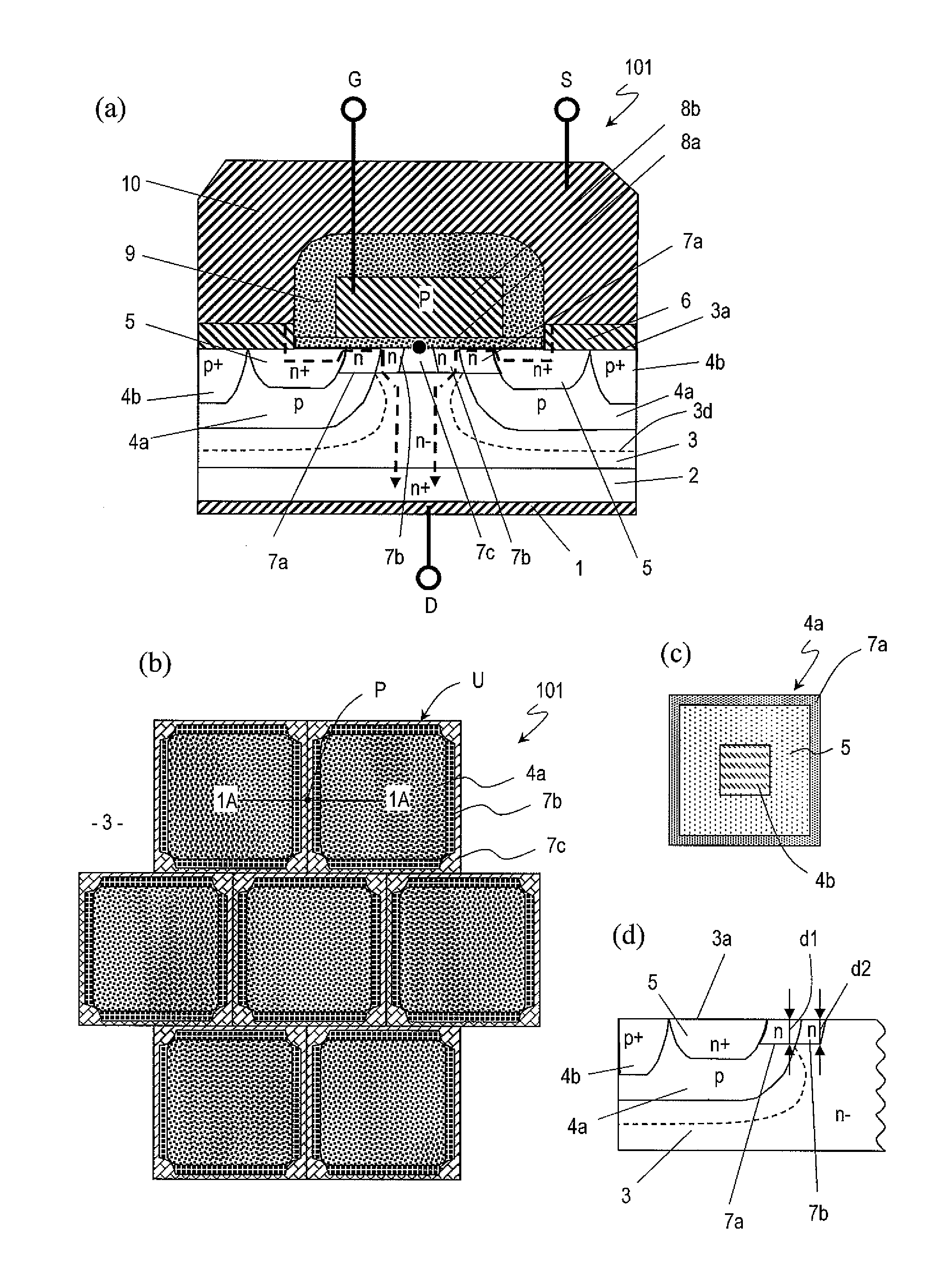Semiconductor device and process for production thereof
a technology of semiconductor devices and semiconductors, applied in the direction of semiconductor devices, basic electric elements, electrical equipment, etc., can solve problems such as avalanche breakdown, and achieve the effects of reducing channel resistance, reducing channel length, and increasing reliability
- Summary
- Abstract
- Description
- Claims
- Application Information
AI Technical Summary
Benefits of technology
Problems solved by technology
Method used
Image
Examples
experimental examples
[0094]The present inventors carried out experiments to examine how a variation in the dopant concentrations of the second doped region 7b of the first conductivity type and the body region 4a would affect the channel resistance of the MISFET 101 of the first preferred embodiment. The results are as follows.
[0095]Suppose the size of each unit cell is indicated by Xcell and the interval between the respective first n-type doped regions 5 of two adjacent unit cells and the interval between the respective second n-type doped regions 7a thereof as measured in the direction in which the unit cells are arranged are indicated by a+2Lg and a, respectively, as shown in FIG. 7. The width of the second n-type doped region 7a as measured in the direction in which the unit cells are arranged is indicated by Lg representing the channel length. The numerical values that were used to make a calculation are shown in the following Table 1:
[0096]
TABLE 1ItemSignUnitValueUnit cell sizeXcellμm9.6Interval ...
PUM
 Login to View More
Login to View More Abstract
Description
Claims
Application Information
 Login to View More
Login to View More - R&D
- Intellectual Property
- Life Sciences
- Materials
- Tech Scout
- Unparalleled Data Quality
- Higher Quality Content
- 60% Fewer Hallucinations
Browse by: Latest US Patents, China's latest patents, Technical Efficacy Thesaurus, Application Domain, Technology Topic, Popular Technical Reports.
© 2025 PatSnap. All rights reserved.Legal|Privacy policy|Modern Slavery Act Transparency Statement|Sitemap|About US| Contact US: help@patsnap.com



